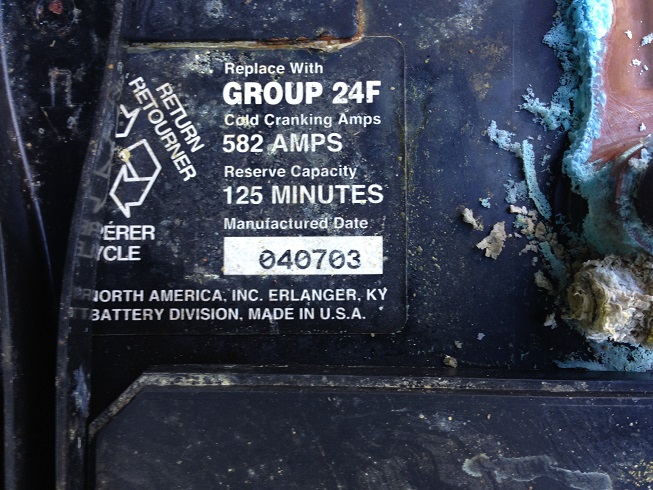Just How Long Can You Expect An Automotive Battery To Last?
When I first started driving the most common automotive battery was probably a 24 month battery, i.e. a 24 month warranty. If you got 36 months out of it, you considered yourself really lucky. Not long after, 48 month batteries appeared. You probably got a full one year replacement warranty followed by a prorated warranty for the next 3 years. If you paid $48.00 for the battery and it died after 3 years and 11 months, you probably got $1.00 back. Chances were good that once your battery was out of warranty, you should start thinking about replacing it before it died and left you stranded.
Over the years, batteries have improved considerably. Now you can get batteries with 60, 72, and even 84 month warranties and, provided your vehicles electrical system is working properly, you battery will live beyond its warranty period.
I haven’t really thought much about automotive batteries for quite a while. In the past my theory was purchase the highest cold crank amperage battery with the longest warranty I could get that would fit in the battery holder. That usually meant that I only purchased one battery and it lasted for the rest of the time I owned the vehicle which, in most cases, was less than the warranty on the battery.
In late September 2014 I was checking out the family vehicles, getting them ready for the winter and opened the hood on my wife’s car. A little history on this vehicle. It’s a 2003 Toyota Camry purchased new by my daughter who owned it until April 2014 when she decided she wanted something newer. Rather than trade it in, my wife bought it to replace her 1999 Camry. The 2003 has been well maintained and, at the time my wife got it had under 60,000 miles on the odometer.
What I found when I opened the hood was a battery that needed a little help. The terminal had corrosion and needed cleaning along with the battery needing a good cleaning in general. When I replace batteries I always put the little anti-corrosion felts on the terminals. I’ve had people tell me they don’t do anything but in my experience, they seem to help in keeping the corrosion to a minimum. Since I had usually changed the batteries in the family vehicles, if I had changed the battery in this car it should have had the felt disk. There wasn’t any. Looking closer at the battery I realized I hadn’t changed this one, in fact, it was the factory original battery.
When I began using AMSOIL over 20 years ago I heard that one of its characteristics was that vehicles started easier due to the lower friction and better cold flow properties of the AMSOIL Synthetics. Because of this, starters and batteries were supposed to last longer. Didn’t think much about it at the time. If anything, I figured it was just more advertising hype.
Thinking back however, in the last 22 years, not counting this one, I have changed 1, maybe 2 batteries and no starters. In the 25 years before when I wasn’t using AMSOIL, I probably did a battery every few years and 2 or 3 starters over that time period. Would I say the difference is due to AMSOIL? Not completely. Vehicles, including their batteries and starters have improved over the years so I can’t say that AMSOIL is the sole reason the battery lasted as long as it did. But, it probably helped.
Look closely at the date code in the picture below. If I’m reading it correctly it is April 7, 2003. The picture was taken September 24, 2014. That’s almost 11 1/2 years. It would be interesting to know how many 2003 Toyota Camrys were still starting with the original battery in 2014. (And if this car will still be starting with the replacement battery in 2025 ! ! !)

